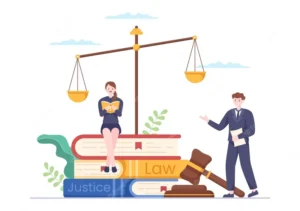Mergers and Acquisitions in the Corporate World: Process and Implications

Mergers and acquisitions (M&A) have become fundamental aspects of corporate growth and restructuring. This comprehensive exploration of M&A processes and their implications draws insights from authoritative texts, including “Business Associations,” “The Anatomy of Corporate Law,” “Easterbrook and Fischel’s The Economic Structure of Corporate Law,” and other seminal works.
Contents
I. Understanding Mergers and Acquisitions
A. Defining Mergers and Acquisitions
- Conceptual FrameworkWe establish a comprehensive definition of mergers and acquisitions, drawing from “The Oxford Handbook of Corporate Law and Governance.”
- Historical Evolution“The Law of Corporations in a Nutshell” traces the historical evolution of M&A activities, providing insights into their origins and development.
B. Types of Mergers and Acquisitions
- Merger vs. AcquisitionWe explore the distinctions between mergers and acquisitions based on “Business Law and the Regulation of Business.”
- Horizontal, Vertical, and Conglomerate M&As“Corporate Finance and the Securities Laws” examines the different types of M&A transactions and their strategic implications.
II. The M&A Process
A. Pre-Deal Preparation
- Strategic PlanningSuccessful M&A transactions begin with strategic planning. We delve into the critical pre-deal preparations outlined in “Mergers and Acquisitions: Cases and Materials.”
- Due Diligence“Business Associations” guides us through the due diligence process, emphasizing its significance in evaluating potential M&A targets.
B. Negotiation and Agreement
- Deal StructuringWe discuss various deal structures and their implications, drawing on examples from “Easterbrook and Fischel’s The Economic Structure of Corporate Law.”
- Binding AgreementsThe negotiation process culminates in binding agreements. We explore the legal intricacies of M&A agreements using insights from “The Anatomy of Corporate Law.”
III. Implications of Mergers and Acquisitions
A. Impact on Shareholders
- Shareholder InterestsM&A transactions directly affect shareholders. We discuss how different types of M&As can impact shareholder interests, referencing “The Oxford Handbook of Corporate Law and Governance.”
- Shareholder Voting“Business Law and the Regulation of Business” provides insights into shareholder voting rights and their significance in M&A decisions.
B. Market and Competitive Dynamics
- Market ReactionsThe market’s response to M&A announcements can be substantial. We analyze market reactions using examples from “Corporate Finance and the Securities Laws.”
- Competitive LandscapeWe explore how M&A activities reshape the competitive landscape, referencing “The Economic Structure of Corporate Law.”
IV. Case Studies
A. Successful M&A Stories
- Exemplary CasesWe examine real-world success stories of M&A transactions, drawing from “Mergers and Acquisitions: Cases and Materials.”
- Challenges and FailuresM&A endeavors are not without challenges. “The Anatomy of Corporate Law” provides insights into case studies of M&A failures.
B. Regulatory and Legal Considerations
- Antitrust and Regulatory ComplianceWe discuss the regulatory aspects of M&A transactions, including antitrust considerations, using examples from “Business Associations.”
- Legal Disputes and ResolutionsM&A transactions can lead to legal disputes. “The Law of Corporations in a Nutshell” outlines the legal frameworks for dispute resolution.
V. Conclusion
The Dynamics of Mergers and Acquisitions
Mergers and acquisitions are complex processes with far-reaching implications. This concluding section emphasizes the dynamic nature of M&A transactions and the need for meticulous planning, drawing on insights from authoritative texts in corporate law and governance.









